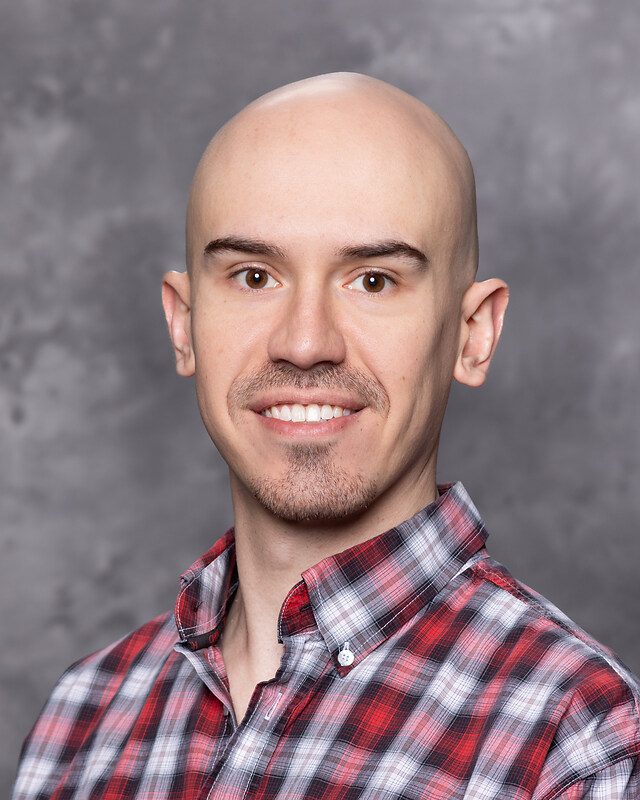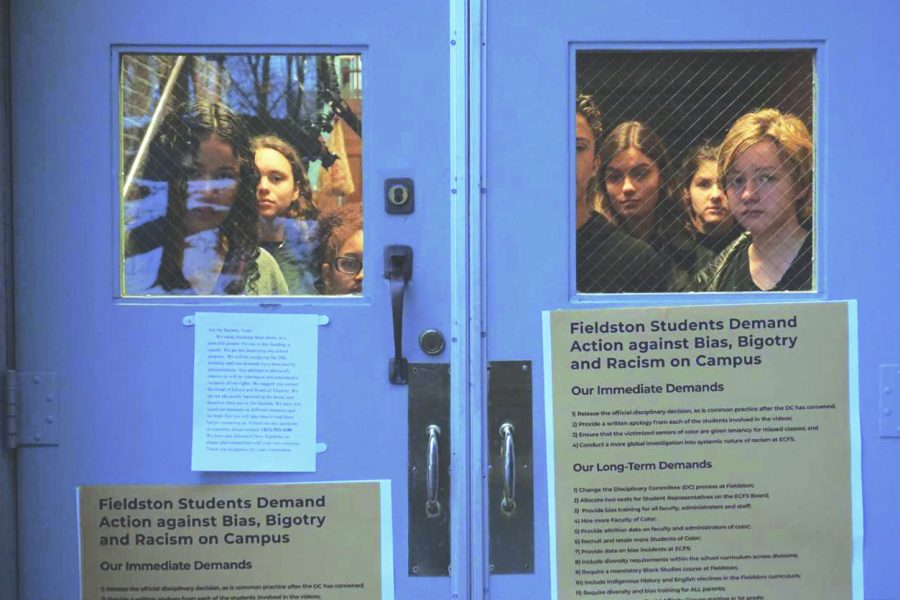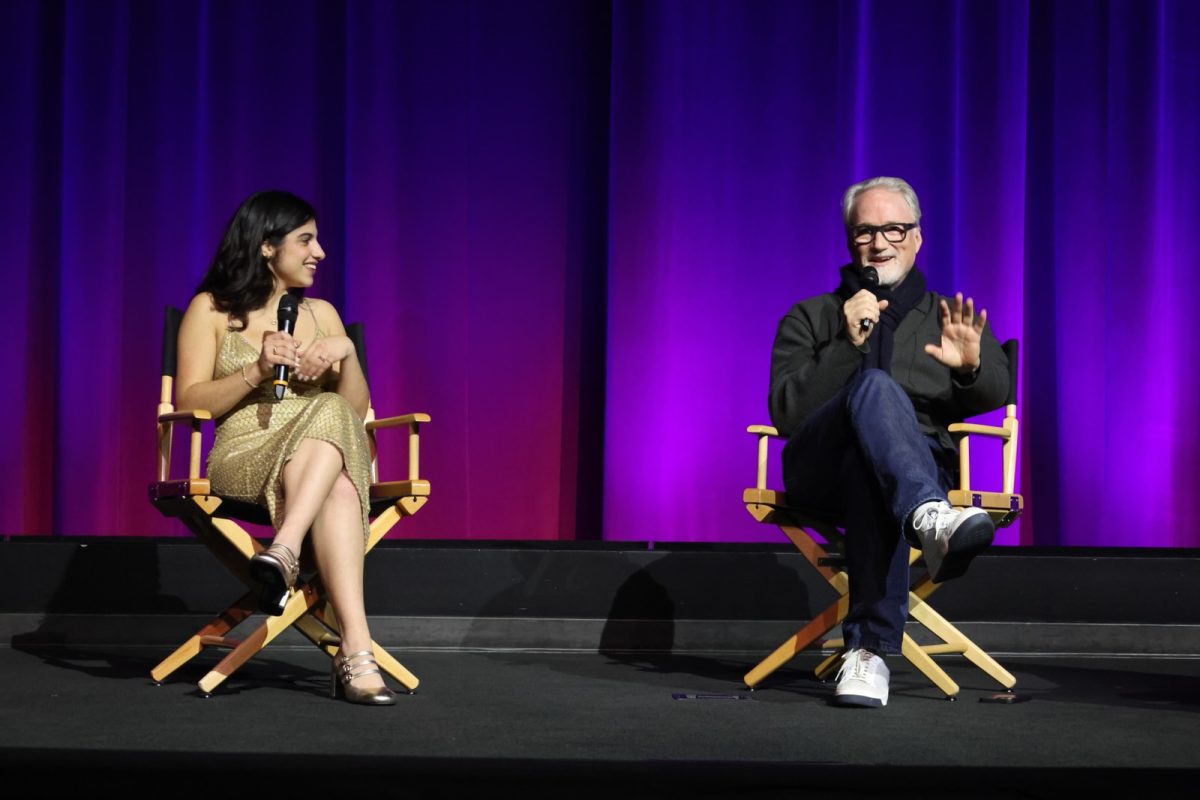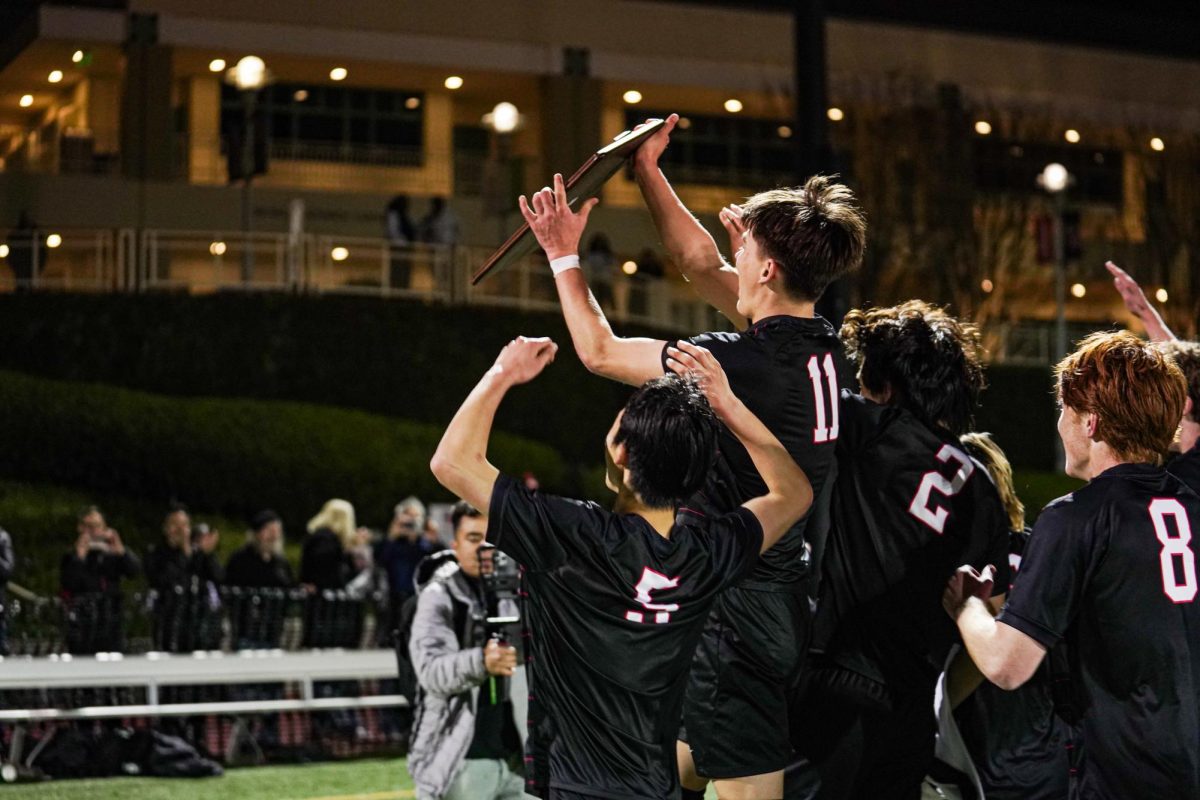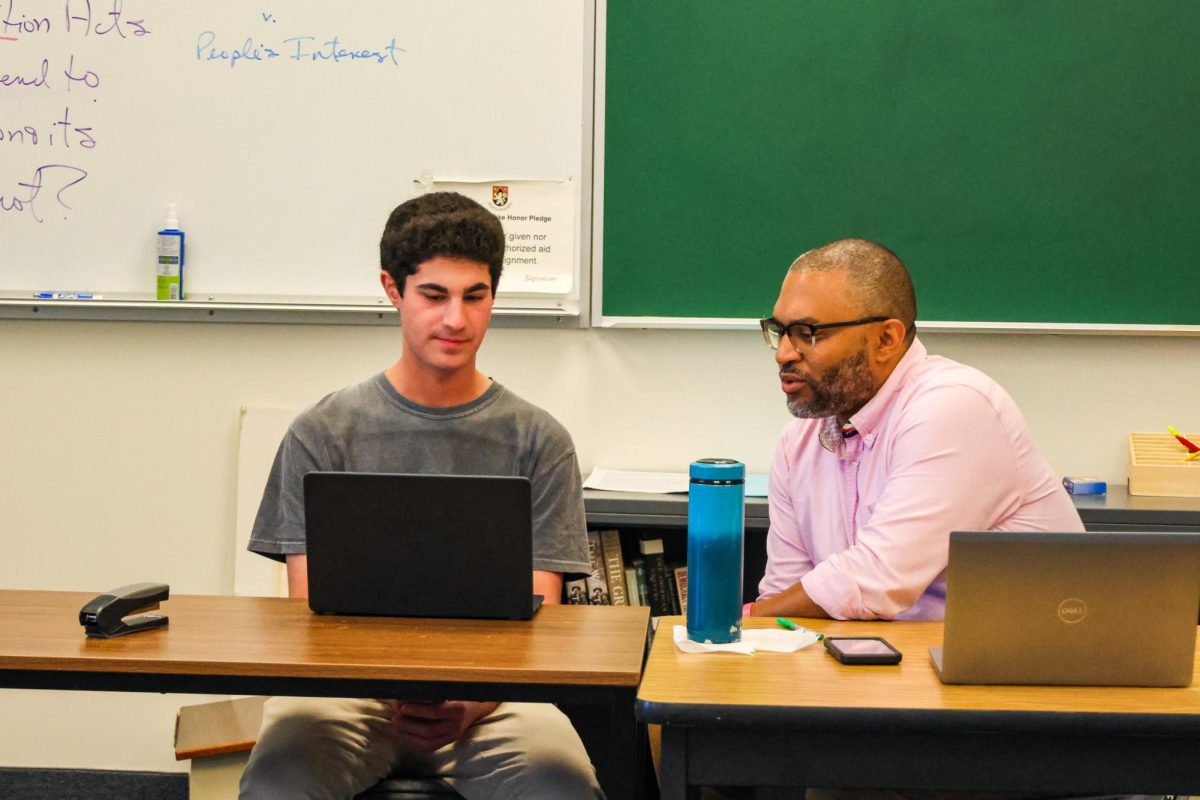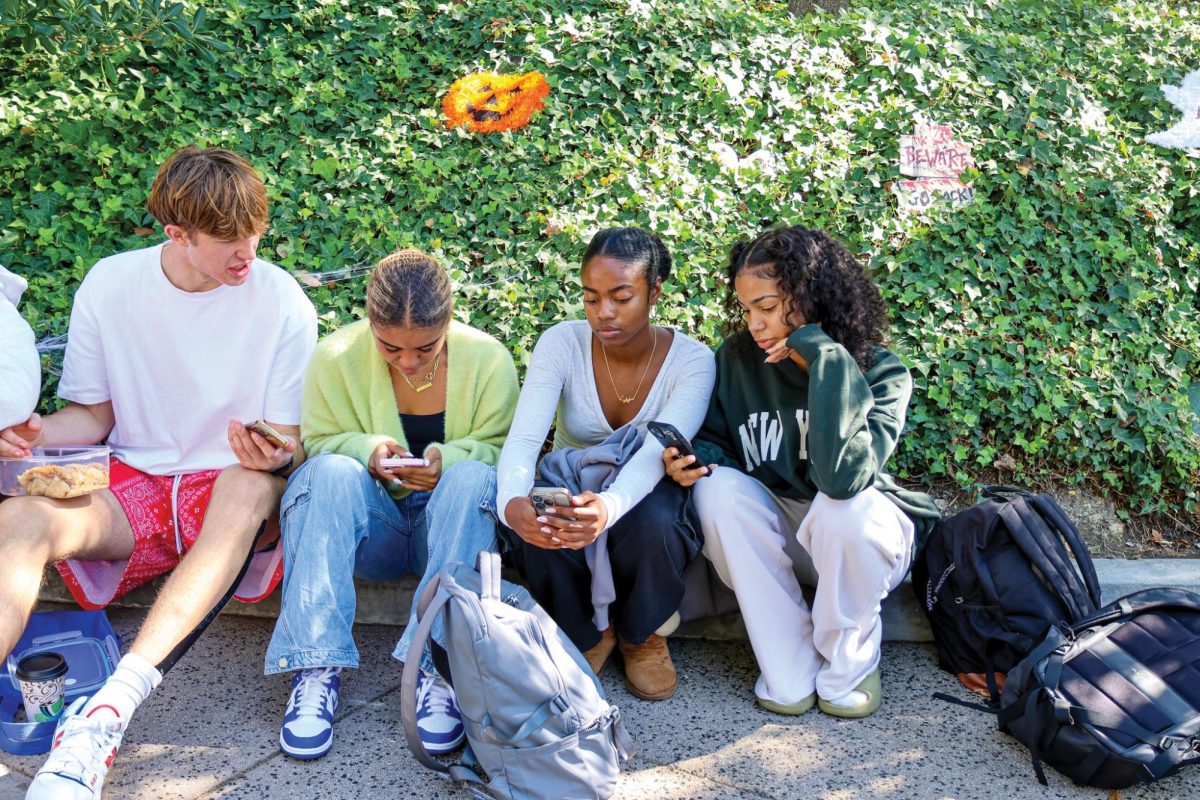Sixty African-American and Puerto Rican students barricaded themselves inside the administration building at Ethical Culture Fieldston School in New York on March 23, 1970.
The students protested the school’s failure to implement long-standing demands to enroll more African-American students, hire more faculty of color and integrate the African-American and Latin-American experiences into the curriculum, according to the New York Times.
Almost exactly 49 years later, 80 Fieldston students barricaded themselves in the administration building once again March 11.
Catalyzed by the school’s response to a video released of Fieldston students using the phrase “crack n****r,” this protest, organized by the newly created group Students of Color Matter, aimed to bring to light the still-pervasive racism at the school, student leader Elisabeth Di Domenico (Fieldston ’20) said.
“The video was not an isolated incident,” Di Domenico said. “There have been so many incidents like that, and it’s created a culture that is unresponsive to racism. It would be a little bit different if our school didn’t claim to be super ethical, progressive, supposed to produce the leaders of the world, accepting of everyone. If you say we’re going to be like that, then we should actually be like that. There were cultural changes that needed to happen, but there [are] systemic changes that needed to happen in our institution.”
The protesting students outlined a list of immediate and longer-term demands, many of which were the same as those created almost half a century ago, Di Domenico said, including updating the curriculum and accepting more students and faculty of color.
“It makes us nervous because what if we are back in 49 years, instructing the next group for almost the same thing we are asking for?” Di Domenico said.
After two days of the lockout, the administration sufficiently agreed to the list of immediate demands, including a written apology, releasing the official disciplinary records of the students in the video and an investigation into the systemic racism at the school, Di Domenico said. By the end of the lockout, most of the student body, as well as middle schoolers, had been participating in sit-ins and workshops in various buildings at the school, Di Domenico said.
High schools across the nation have recently come under scrutiny for similar incidents. On March 15, staffers discovered racist and homophobic graffiti spray-painted on William G. Enloe High School in Raleigh, North Carolina. Eight days before that, racist usernames and swastika symbols, anonymously entered by students, were projected during an all-school assembly at Sidwell Friends School in Washington, D.C. Three days before that, students from Newport Harbor High School and other Orange County high schools were pictured in a Nazi salute, gathered around a beer pong table with cups arranged in the shape of a swastika.
Despite the outcry over the image at Newport Harbor, the school was vandalized with Nazi posters a week later. These incidents represent a larger case of anti-semitism in the Orange County area, Newport Harbor parent Michelle Cassini ’88 said.
“The ignorance doesn’t surprise me, but doing such a blatant manifestation of hate and disrespect is deplorable,” Cassini said. “I learned that kids have to go in the bathroom on a daily basis and urinate next to swastikas graffitied on the wall or sit at desks in various classrooms that have swastikas carved into the desk. My kids [felt] the minute they arrived to the high school, they were so uncomfortable with their Jewish identity that they basically had to disrobe themselves of it and keep it to themselves. This kind of stuff is rampant and met with pure complacency from the administration.”
Cassini said she is planning to lead a team of parents and teachers with resources from the Jewish Federation & Family Services, Orange County and Anti-Defamation League to hold schools accountable for potentially complacent behavior.
“There needs to be absolutely a lot more education and not just teaching kids district standards,” Cassini said. “In my opinion, what my kids learned [in] biology class about the fish down under the sea, I don’t care at this point. I would rather them learn about the gas chambers.”
President Rick Commons said that the increased attention to these issues in high schools can be attributed to growing empowerment and activism among students.
“I think that students, high school students, are demanding that institutions be places where those identities can be expressed without fear and can be celebrated throughout,” Commons said. “That, in a way, makes my job a little harder, but I’m grateful for it. That’s part of why we’re doing more, because students are asking us to. We’re seeing it at other schools, and of course we want to prevent that from happening, but I also think our students are asking for more of this kind of attention to community and identity.”
In the wake of these stories of racism and intolerance at peer institutions, the Harvard-Westlake administrative team met March 11 to discuss ways in which the school can foster a culture of respect, Head of Upper School Laura Ross said. The meeting focused not only on how to educate students about how to responsibly use social media, but also on how to intentionally teach students beginning in seventh grade how to treat people who are different from them with respect, Ross said.
“You guys are teenagers and teenagers make mistakes, so what we want is to figure out how we can make sure that, as a community, we are talking about these important things so that hopefully [intolerant behavior] is not one of the range of mistakes that people at Harvard-Westlake would make,” Ross said.
Harvard-Westlake has faced its own issues regarding insensitive behavior. This year, a middle school student distributed “n-word passes” condoning racist epithets. Last year, a student used racist, homophobic and anti-semitic slurs in an online chatroom on Twitch, an online video streaming platform. Two years ago, students faced discipline for using racial and homophobic slurs in a social media post.
The recent events brought to light by the media this month in high schools across the country prompted administrators to re-evaluate how they bring up conversations about the schools commitment to ensuring every identity is welcome and celebrated, Commons said.
“There is nothing that is more destructive to the sense of community here than when individuals feel like they are being treated unfairly or are not supported by the administration and the faculty,” Commons said.
















